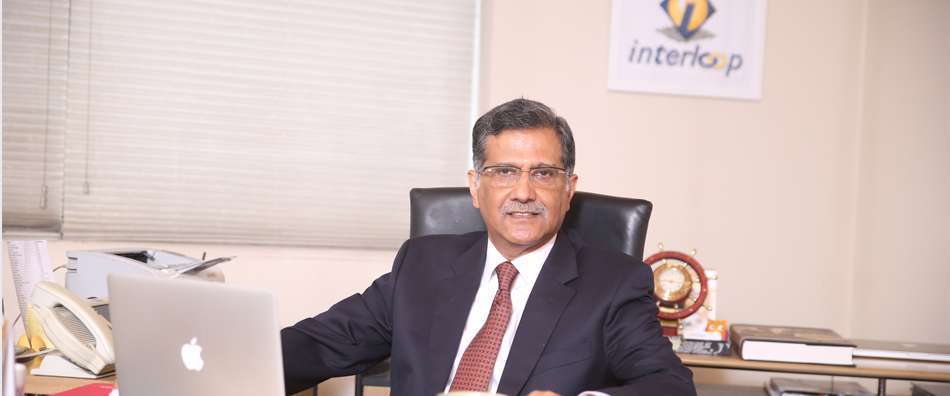
Textile Policy Should Have Statutory Protection, says Chairman Interloop
06 Feb Textile Policy Should Have Statutory Protection, says Chairman Interloop
The past few months saw hype about the textile sector, posting consistently high exports, and is in the process of getting a new policy with reportedly favorable terms approved. To better understand what’s ahead for the industry, Mettis Global, a leading business news agency had an insightful chat with Musadaq Zulqarnain, Chairman Interloop Limited & Interloop Holdings. Below are some excerpts from the interview.
The company’s full-year profitability plunged by 65% during FY20. Can you explain why?
MZ: Primarily there were two reasons: first, we were in an expansion phase and the last two quarters took a serious hit as orders got canceled due to the COVID-19 pandemic. Production completely shut down and we had to pay salaries, which costs around Rs 650-700 million a month, and the company didn’t let anyone go. Also, every year, the rupee depreciates, resulting in a windfall in receivables. However, this time, the local currency got stronger, and we had to make accounting adjustments accordingly. These were the main reasons and you can see that the results of the next two quarters are phenomenally better, despite no marketing due to travel restrictions.
How sustainable are the renewed profitability and order flows considering two opposing factors: the lockdowns in Europe and the vaccine rollout?
MZ: Generally speaking, in the short term, there will be some delays in orders from Europe as it is in a severe lockdown. Lots of brick and mortar retailers there have a relatively smaller online presence than the US players, so there will be an impact, but not as bad as the first wave. The vaccine rollout has ignited a hope but nobody knows how long it will take. Lastly, the orders also depend on the broader macroeconomy. If the disposable income is shrinking, then people won’t really be buying clothes, therefore demand might take a small hit in the coming 2 – 4 months as well. However, good stimulus in the West can result in better disposal incomes and better sales.
Textile exports seem to be finally picking up the pace after staying flat for the longest time. What exactly has changed?
MZ: The fact that Pakistan operates in a very basic segment, like t-shirts, fleece garments, underwears, socks, and jeans, etc. proved to be a blessing in disguise. All of these happened to be in high demand during COVID-19, so the orders grew while orders of fashionable garments were down. Secondly, consumption of home textiles, which is our strong suit, went up. There’s another largely unnoticed factor: a huge share of garments and knitwear supply in the US comes from Central and South America, and all those countries were badly hit by COVID-19. A fraction of that demand was diverted to Pakistan, which was on top of some orders from India and even China. Then obviously the exchange rate became reasonably favorable as well, which was coupled with energy rates getting more competitive with the rest of the markets. All of these fueled the export growth in the value-added garments.
How much of a net impact does rupee devaluation have on an export unit, considering a major chunk of input costs are for energy, which moves along with the exchange rate?
MZ: Quickly devaluing the currency also negatively affects the exports as the buyer immediately asks for a decrease in price. On the other hand, our costs jump since all the commodities go up. If 50% of my costs are raw materials, they automatically adjust. Similarly, energy automatically adjusts. All we benefit from depreciation is a small share of labor costs, and if we have to pass that on to the customer as well, then it’s a loss for us. There is a thumb rule: the adjustment should be more or less equal to the difference between our and the trading partner’s inflation rate. But it has to be done gradually, not with the State Bank’s interference.
What’s your view of the upcoming textile policy and how that can boost exports?
MZ: For the first time, the textile sector was taken on board, and the commerce adviser to the PM created a committee of industry experts, and let us make the policy which is yet to be approved. However, the policy can be reversed on a single individual’s whim, say, by the new administration. So in my view, there should be statutory protection for any policy in order to be effective. To make sure the industry also sticks to its end of the bargain, the government can base the incentives on meeting certain key performance indicators. For apparel and value-added garments, the thumb rule is that the asset turnover ratio will be at a maximum 2:1. So if we need to increase exports by $10 billion, then we’ll have to invest $5 billion. Now on that $25bn target, apparel currently occupies around $7bn in the overall textile sector exports, and in order to take that to $15-20bn, you will need $8-10bn of investments in technology.
In order to do that, the industry also has to incur the cost of infrastructure, such as by installing captive plants, roads, or different types of boilers. Meanwhile, the alternate ways of making wealth have been made so much easier that it leaves little incentive for anyone to actually make investments.
Article Ref: https://mettisglobal.news/textile-policy-should-have-statutory-protection-interloop-chairman


No Comments